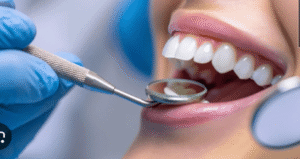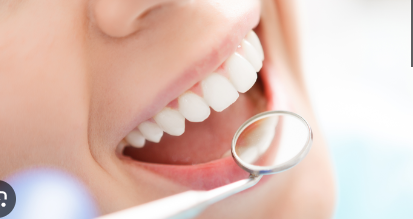A root canal leaves the treated tooth more brittle and prone to fractures. Restoring the strength, form, and appearance of a tooth, a dental crown covers and guards it. Should a crown be absent, the tooth may finally break or crack. Children may have a simpler root canal called a pulpotomy in paediatric dentistry, then a stainless-steel crown to guard primary teeth. This preserves space for and function for adult teeth.
These treatments centre on preserving natural teeth, avoiding issues, and guaranteeing long-term dental health. From dental anxiety to oral perfection, this conversation explores their responsibilities, advantages, and factors to be considered to guide you.
Table of contents
Important Lessons Restoring dental health and managing extreme tooth pain depend mostly on root canals and dental crowns. These treatments enhance appearance, preserve oral functioning, and help save natural teeth. Effective treatments depend on choosing a reliable and seasoned dental office. Effective planning and management of dental healthcare costs depend on an awareness of the cost determinants. Introduction In the domains of dental health, one often must negotiate discomfort and agony. Still, some treatments turn mouth pain into a consistent, healthy smile. Such treatments are root canals and dental crowns, which, taken together, reduce discomfort, restore function, and improve appearance.
Preserving natural teeth
These treatments centre on preserving natural teeth, avoiding issues, and guaranteeing long-term dental health. From dental anxiety to oral perfection, this conversation explores their responsibilities, advantages, and factors to be considered to guide you. Root Canals and Crowns’ Significance. In dental treatment, root canals and crowns make a dynamic team. Mostly treating acute pain from infections inside the pulp of the tooth, root canal treatment is It cleans the root canal area, removes the diseased tissue, and closes it to prevent further infection. Closely following are dental crowns, which cover a repaired tooth with a protective layer, restoring its strength, function, and attractiveness.
Treatments including tooth extraction
This combined strategy protects patients from more involved treatments, including tooth extraction and replacement, and preserves their original teeth. The combination of root canal and crowns is evidence of the dedication of modern dentistry to maintain natural teeth wherever feasible, therefore improving oral health and the patient’s well-being.
Local anaesthesia is given to guarantee comfort once the choice for a root canal is verified. Carefully removed is the infected or inflammatory pulp; the root canal space is cleaned and contoured.
Knowing the Root Canal Process
Starting with diagnostic tests, the root canal treatment consists of numerous important phases. Examining the tooth, the dentist orders X-rays to determine the degree of the infection. Local anaesthesia is given to guarantee comfort once the choice for a root canal is verified. Carefully removed is the infected or inflammatory pulp; the root canal space is cleaned and contoured.
By filling the canal with a biocompatible material, one reduces the risk of additional infection and strengthens the tooth structure. Finally, to improve tooth lifetime and appearance, a permanent crown replaces the temporary one. Every aspect of the operation is marked by accuracy and diligence, therefore guaranteeing a good and long-lasting recovery.
Root Canal and Crown Cost Considerations
For many, the financial factor of dental treatments is a major concern. Root canals and crowns may cost differently depending on tooth location, degree of infection, dentist experience, and geographic area. With dental implants and other prostheses, root canals are less expensive than tooth extraction and restoration. Crowns also come in a variety of materials—ceramic, porcelain, and metal alloys—each with unique price tags.
Although the initial outlay may appear small, considering the long-term benefits of saving a natural tooth usually shows worth in selecting these operations.
Benefits of Selecting a Dependable Dental Clinic
Using a reputable dental clinic for crown and root canal treatments increases your chances of success and happiness. Expert dentists use modern equipment for exact treatments, give thorough exams, and explain procedures in great detail. Moreover, credible clinics are easy and stress-free for patients since their well-coordinated personnel help to enable effective treatment procedures.
Apart from clinical knowledge, the atmosphere and patient-centered approach of reputable clinics help to create comfort and certainty during therapy. They guarantee the presence of long-term care plans, therefore supporting ongoing dental health.
Reputable dental clinic
Therefore, choosing a trained and reputable dental clinic is absolutely crucial in turning terrible oral problems into effective, health-restoring treatments.
Many dental insurance plans pay for some of these procedures, therefore reducing the financial load. Open communication about expenses guarantees that patients make wise, reasonable decisions in line with their financial situation and medical objectives. This also helps dental practitioners.
Root canals and dental
Crowns show the junction of dental science and artistry. Together, they help to reduce discomfort, avoid major dental problems, and preserve the integrity and use of natural teeth. Appreciating the important roles these operations play in oral health can help people make wise decisions, leading to strong, healthy smiles. Giving this element of dental treatment top priority and working with qualified experts guarantees that the road from pain to perfection is reachable and long-lasting. Patients who carefully weigh cost and clinic choice might embrace a customised, pragmatic approach to long-term dental health.
Last Views
Usually taken for granted is dental health until pain strikes. We therefore have to pay attention in the still anguish of a toothache or the delicate throb of an inflamed nerve. Two of the most crucial treatments in modern dentistry are root canals and dental crowns, which are carried out during these key events. These treatments alter rather than only provide restfulness.
Rarely is the road from suffering straightforward. In dentistry, it usually entails a thorough trip beginning with diagnosis, passing through discomfort, and finishing in restoration and confidence. Although a crown could seem like a luxury and a root canal could seem frightening, taken together, these treatments usually make the difference between tooth loss and tooth preservation. They are the link between long-term oral health and temporary pain.
Both surgeries have witnessed
Both surgeries have witnessed significant developments throughout the years. Improved procedures, better materials, and newer technologies have turned once-fearsome into predictable, almost painless remedies. With anaesthesia, contemporary instruments, and patient-centered care, root canals today are simple and effective, far from the agony scenes once envisaged. Dental crowns have similarly changed from awkward metal casings to exquisite porcelain and zirconia restorations that replicate natural enamel.
One cannot stress the value of these medicines. Beyond just fixing damage, they restore function, guard nearby teeth, and stop future problems. More than that, they enable patients to recover something priceless: the capacity to chew, smile, and communicate free from shame or agony.
Still, misunderstandings abound
Still, misunderstandings abound even with their worth. Still, some people think crowns are only cosmetic or that root canals are intolerable. Both functionally and aesthetically, they are rather important for preserving the integrity of your smile. Remember this: modern dentistry is about preservation rather than extraction when you weigh your choices for handling dental problems, whether you are now in pain or planning forward to prevent future difficulties. It’s about arming you with answers combining compassion, art, and science. And among the best friends you might have in that regard are root canals and crowns.
In summary,
Often, wise judgements and professional treatment help one travel from dental pain to a confident, healthy smile. In the realm of oral healthcare, root canals and dental crowns are important treatments that serve as both protectors and restorers.
Root canals seal off possible damage, remove infection, and relieve discomfort, therefore saving your original teeth. Targeting the root of the problem, these exact treatments do not compromise the structure of your tooth. A good root canal retains your bite, keeps alignment, and guards against more decay.
On their own, though, a root
On their own, though, a root canal is usually insufficient. Crowns enter here. A dental crown guarantees the treated tooth stays strong, stable, and protected from daily stresses such as chewing and grinding by capping the tooth with a durable, aesthetically acceptable covering. It also brings back the tooth’s natural form and look, therefore improving your smile without sacrificing function.
Root canals and crowns taken together offer a complete answer for tooth damage, decay, or infection. One fixes the inside; the other strengthens the outside. Modern restoring dentistry depends on this one-two punch.
Taking care of your teeth
Taking care of your teeth should be a top concern in the modern world, where first impressions count and quality of life is tightly related to physical well-being, not a luxury. Once hated or misinterpreted, these surgeries today offer hope, healing, and an opportunity to start over.
Thanks to the creativity and dependability of crowns and root canals, your comfort, confidence, and oral health are well within reach, whether your present dental condition is one you are battling or whether you are merely planning for a future smile.
Should I get a root canal or a crown? Typical indicators include: Constant tooth ache or sensitivity, Gum gingering or abscess development, Tooth darkening, cracked or fractured teeth, a big filling compromising the tooth structure. The best approach to be sure you need treatment is to see a dentist and have an X-ray. Can I typically floss and brush after receiving a crown? Definitely yes!
Will my crown resemble my natural tooth?
Essential are regular flossing and twice-daily brushing. Particular close care should be paid to the base of the crown (gumline) to stop plaque development. Steer clear of biting on particularly hard objects, utilising the crowned tooth. Will my crown resemble my natural tooth? Surely. Custom-designed to match the tint, shape, and texture of your real teeth, porcelain and zirconia crowns. A well-made crown is practically exactly like the actual thing.
Root canals and crowns are proactive investments in your long-term dental health, not only reactive procedures. They restore the appearance and function of your teeth, stop more issues, and eradicate pain. These treatments are more easily available, pleasant, and successful than ever thanks to current approaches.
Dental insurance could pay
for all or only a portion of the expenses. Do these treatments have any hazards? Considered safe and effective are both crowns and root canals. Like every medical operation, though, hazards exist: Sometimes root canals promote reinfection or miss diseased tissue. Inappropriate fit can cause crowns to slip off or loosen. Good technique and follow-up greatly lower these hazards. Can kids have crowns and root canals?
yes. Children may have a simpler root canal called a pulpotomy in paediatric dentistry, then a stainless-steel crown to guard primary teeth. This preserves space for and function for adult teeth.

From Pain to Perfection: Crowns’ and Root Canals’ Part in Dental Health
Final thought
Therefore, remember that the road from pain to perfection is paved with the correct knowledge and the right treatment, regardless of your dental suffering or simple need to know your options. Is there anything else than root canals? Tooth extraction is the one actual substitute for a root canal. Although extraction is occasionally required, it usually results in more expensive and complex procedures, such as bridges or dental implants. Usually, the greatest choice, root canals protect your natural tooth structure. Crowns and root canals cost what? Location, materials, and insurance coverage all impact costs. Usually, in the UK, a root canal might run £250 to £800 for each tooth.
Concluion
Depending on the material, a crown could run between £400 to £1,000.NHS and commercial rates differ greatly. Calls for some crowns can be created and fitted the same day with modern CAD/CAM technology. Crowns and root canals last? Good oral hygiene and frequent dental visits will help root canals last a lifetime. Although they usually last 10 or 15 years, with good care, crowns can live longer. Steer clear of hard foods, grind instead, and keep dental hygiene. Should a root canal leave me without a crown?
The tooth is prone to fractures without a crown, particularly molars with increased biting power. This can cause tooth loss or eventual need for more sophisticated dental work. Should I eat normally following a crown or root canal? True. You can eat regularly following the treatments and until healing is complete. For a few days, avoid especially hard or sticky meals, nevertheless, and be careful until numbness passes following the surgery.
FQS
1. One should know what a root canal is and why it is required.
A root canal is a dental operation whereby damaged or infected pulp—nerve and blood tissue—is removed from inside a tooth. It becomes imperative when extensive decay, trauma, or fissures cause bacterial invasion of the pulp. Untreated, this can lead to extreme discomfort, swelling, and possibly tooth loss.
2. Are root canals painful?
Modern root canals are not painful, unlike what many people think. The operation is like getting a normal filling with advanced anaesthesia and tools. Root canals cause less pain than they alleviate.
3. Why, following a root canal, do I still require a crown?
A root canal leaves the treated tooth more brittle and prone to fractures. Restoring the strength, form, and appearance of a tooth, a dental crown covers and guards it. Should a crown be absent, the tooth may finally break or crack.
4. From what materials are dental crowns fashioned?
Materials used to create crowns range from:
Porcelain (extremely beautiful and natural-looking)
Zirconia, robust and long-lasting,
Metal alloys—very strong but less aesthetically pleasing—
Porcelain-fused to metal (aesthetic with enhanced strength)
Based on the location, function, and personal tastes of the tooth, your dentist will suggest the ideal material.
5. A crown or root canal treatment takes how length of time?
Usually spanning one to two visits, each lasting between sixty and ninety minutes, a root canal requires
Usually involving two visits, one for preparation and impression-taking and another for implantation, a dental crown https://liferools.com/wp-admin/post.php?





Leave a Reply